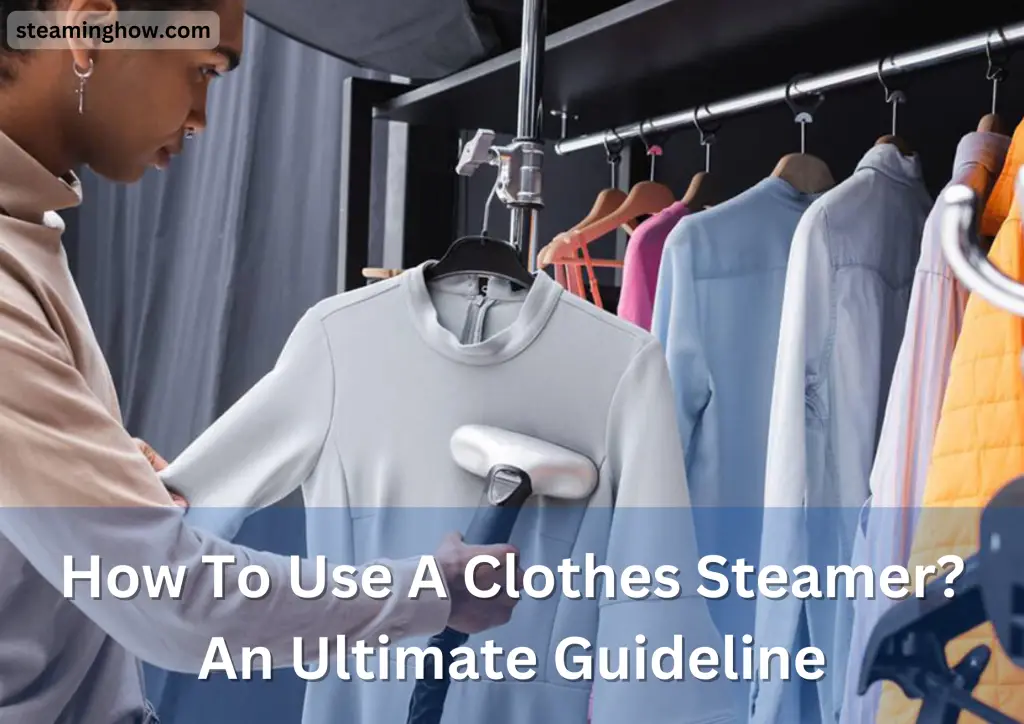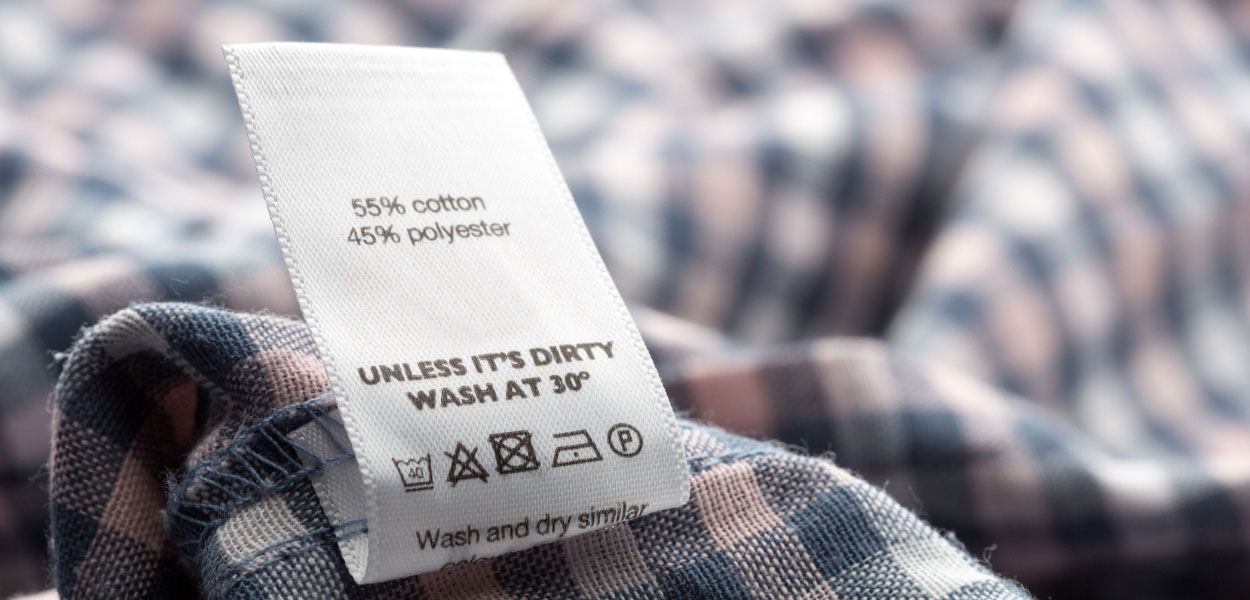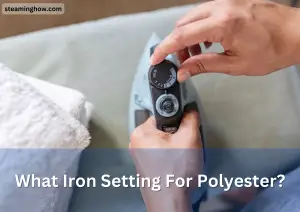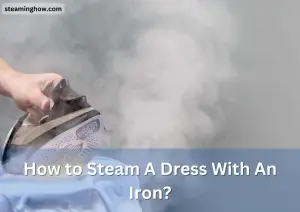Last Updated on December 7, 2023 by Erik Sullivan

The beauty of using a clothes steamer is that, it removes stubborn wrinkles and creases from your garments and other fabrics in less effort and time. Besides that, it also deodorize your clothes by eliminating odor causing bacteria.
However, you may have some questions about using a clothes steamer. In this post, we will teach you how to use a clothes steamer safely and effectively.
Table of Contents
How Do Clothes Steamers Work?
A clothes steamer works just like a floor steam cleaner. It works by heating up distilled water and releasing it as steam through a nozzle. The steam then penetrates deep into the fibers to loosen the bond between the polymer molecules in the fabric. This help to force out wrinkles and relaxes the fibers of your garment.
However, the thing that sets a steamer apart from an iron is that, instead of flattening, it just relax the clothes fibers. That means, steaming is gentler than ironing.
Note that, a clothes steamer can produce high temperature of steam up to 200°F which is hot enough to eliminate dust mites from your clothing.
Things to Do Before Using a Steamer On Your Clothes
Before you get started, you should do some prep work to use your steamer efficiently. And this is really important.
1. Read The Steamer Manual Carefully
There’re many brands that produce steamer. Each steamer is different, so it is important that you read the manual before using it. This will ensure that you are using the steamer efficiently and safely.
The information that you should look for including:
- Filling instruction (tap or distilled water)
- Operating instruction
- Assembling and disassembling process
- Safety precaution
- Using attachments
2. Check The Clothes Label

You should always check the clothes label before steaming it with a fabric steamer. Because, there are certain types of clothes that should not be steam cleaned normally like- silks and synthetics. The manufacturer include these information with the clothes.
However, I recommend to do a test on an inconspicuous area of the fabric to check whether the fabric can handle the steam. This will protect your garment from getting damaged by heat and moisture.
3. Types of clothes steamer
Clothes steamer has two variations available in the market: Portable/handheld steamer and upright/standing steamer.
Handheld steamers are portable and lightweight, making them easy to use and maneuver. They feature small water reservoir and narrow steam nozzle. They are ideal for spot-steaming or steaming small batches of garments at home.
On the flip side, upright clothes steamers are larger and heavier than handheld steamers. They have a large water tank and big steamer nozzle. They can produce a continuous stream of steam. They can be utilized on your clothes as well as other surfaces of your home including: upholstery, curtains, drapes, bed sheets etc.
How To Use A Clothes Steamer Efficiently?
How to Use a Handheld Clothes Steamer? (Step by Step)
:max_bytes(150000):strip_icc()/beautural-steamer-for-clothes-portable-handheld-garment-fabric-wrinkles-remover-tout-7e201e6265144145a0f78071bc8389d2.jpg)
Things You’ll Need:
- A hanger
- A portable steamer
- Some distilled water
- Your garment that you want to steam
The Process:
Step 1: Clean the steamer nozzle: This is important to clean the steamer nozzle with a soft piece of towels. This will ensure that, the nozzle is free of any kinds of dust particles.
Step 2: Hang your garment: Use a padded hanger to hang your garment properly. This type of hanger is really helpful to relieve stress on the garment and maintain its original shape.

However, if your dress is too long make sure that, it does not touch the ground. You can use a sturdy surface where you can hang your hanger. A drying rack can be a great choice for that.
Step 3: Fill the reservoir with water: You should only use distilled water to protect your steamer from getting stuck by mineral buildups. Also make sure to follow the instruction about the maximum water capacity of the tank. Don’t cross the maximum filling line as it can cause your steamer to leak or prevent it from working properly.
Step 4: Plug in the steamer and turn it on: After filling the tank, plug in your device with an electric outlet. Press the ON button to produce steam. If your steamer comes with a steam Ready light then wait for it.
Step 5: Test the steamer: If you’re going to use the steamer for the very first time after getting it, make sure to apply the steam in an old clothes first, as there may be some sediment left from the manufacturing process.
Step 6: Select the correct steam setting (Most Important): This is the most crucial things that you should follow strictly. Usually, garment steamers come with multiple steam setting for different types of fabrics.
So, select the most appropriate steam setting based on the type of your clothing. If you’re dealing with a delicate fabric, use the low heat setting. Use high heat setting for thicker and heavily wrinkled garments.
Step 7: Hold the steam nozzle properly and apply the steam: Now, you’re all set for steaming your clothes. Hold the steamer nozzle at least 4 inches away from the surface if you’re going to steam a delicate garments. If it’s a strong fabric for ex. wool, cashmere etc. then hold the steamer closely to the fabric.
Next, press the steam button to release steam. Always remember to apply steam from up and downwards way for the best result. If you notice any tough wrinkles in any section of the fabric then you should hold the steamer over that section for up to 30 seconds.
Caution: Always have the steam facing away from you or anyone else in the room.
Be aware about steaming delicate garments. Make sure to use special attachment for delicate fabrics. (If your unit comes with that). This attachment separates the soleplate from the garment so that it does not scorch.
Step 8: Let The Fabric Dry: When you’re done steaming your fabric, let it dry for some time. Do not fold it before getting cool.
What Types Of Fabrics are Safe For Steaming?
As you may know, steaming is the most effective ways of getting wrinkles out of clothes. But not all fabrics are safe for steaming. In fact, some fabrics can be seriously damaged by the heat and moisture of a steamer.
So, what types of fabrics are safe for steaming? Generally speaking, most natural fabrics like cotton, linen, and wool can be steamed without any issue. However, synthetic fabrics like polyester and nylon may not fare so well.
Steaming can cause synthetic fabrics to melt, shrink, or otherwise change shape. So if you’re planning on steaming a synthetic garment, it’s best to check the care label first.
Of course, there are always exceptions to the rule. For instance, some synthetic fabrics are designed to be steam resistant. And some natural fabrics may be more delicate than others and require special care when steaming.
If you’re in doubt, it’s always best to test a small, inconspicuous area of the fabric before steaming the entire garment.
How to Maintain Your Clothes Steamer?
If you want your clothes steamer to last, it’s important to take good care of it. Here are a few tips on how to keep your steamer in top condition:
- Make sure the steamer is turned off and unplugged when you’re not using it.
- You should never use tap water in your steamer as it can causes limescale buildup.
- Do not use essential oil or other fragrance in your steamer.
- Empty the water tank after each use.
- Clean and descale your steamer at least once in a month to keep it in good condition.
- Never plug in your steamer on the same circuit with another high wattage appliance.
Frequently Asked Questions
Can you steam clothes instead of washing them?
Yes, you can steam clothes instead of washing them. However, it’s important to note that the steaming process alone is not enough to clean clothes; it only removes wrinkles and freshens them up. For best results, use a combination of steaming and spot cleaning with a little bit of detergent.
Are you supposed to touch clothes with steamer?
There’s no right or wrong answer to this question, as it really depends on what type of fabric the clothes are made of. If the fabric is delicate, you should probably avoid touching it with the steamer. Instead you should hold the steamer a few inches away from the fabric. But, if the fabric is thick, there’s no wrong to do so.
Can you use a steamer while wearing clothes?
No, it’s not safe by any means. The high temperature of steam can burn your skin. It is best to remove clothes before using a steamer.
How close do you hold a steamer?
It depends on the type of fabric. However, the general rule of thumb is to hold the steamer at least 6 inches away from the garment.
Can I use tap water for steamer?
You can use tap water for your steamer, but it’s not recommended. Because, tap water often contains sulfur, and chlorine which can cause mineral buildup inside the tank and affect the performance of the device. Instead, you should use distilled or filtered water which is free of all types of contaminations.
What does a fabric brush do on a steamer?
Fabric brush helps in removing the lint and other dirt particles from the fabric. It also helps to eliminate wrinkles and making the fabric smooth. Additionally, it ensures even distribution of the steam on thicker fabrics.
Can I use essential oil in my steamer?
No, you can’t use essential oil in your steamer directly. It’s not water soluble and can get clogged up inside the tank. (Here’s a nice hack about using essential oil with a clothes steamer)
Conclusion
In conclusion, mastering the use of a clothes steamer involves a few key steps for effective wrinkle removal. Begin by filling the steamer’s reservoir with distilled or demineralized water and allowing it to heat up. Hang the garment on a hanger and stretch it slightly to smoothen the fabric surface.
Holding the steamer vertically, slowly move it across the garment in an up-and-down motion, starting from the top and working downwards. For stubborn wrinkles, applying short bursts of steam while maintaining a safe distance from the fabric aids in wrinkle release.
Finally, allow the garment to dry completely before wearing or storing it to ensure a crisp, refreshed appearance.
Related Posts






[…] clothes steamer can smell bad if you don’t rinse the tank properly after using vinegar to descale the minerals […]